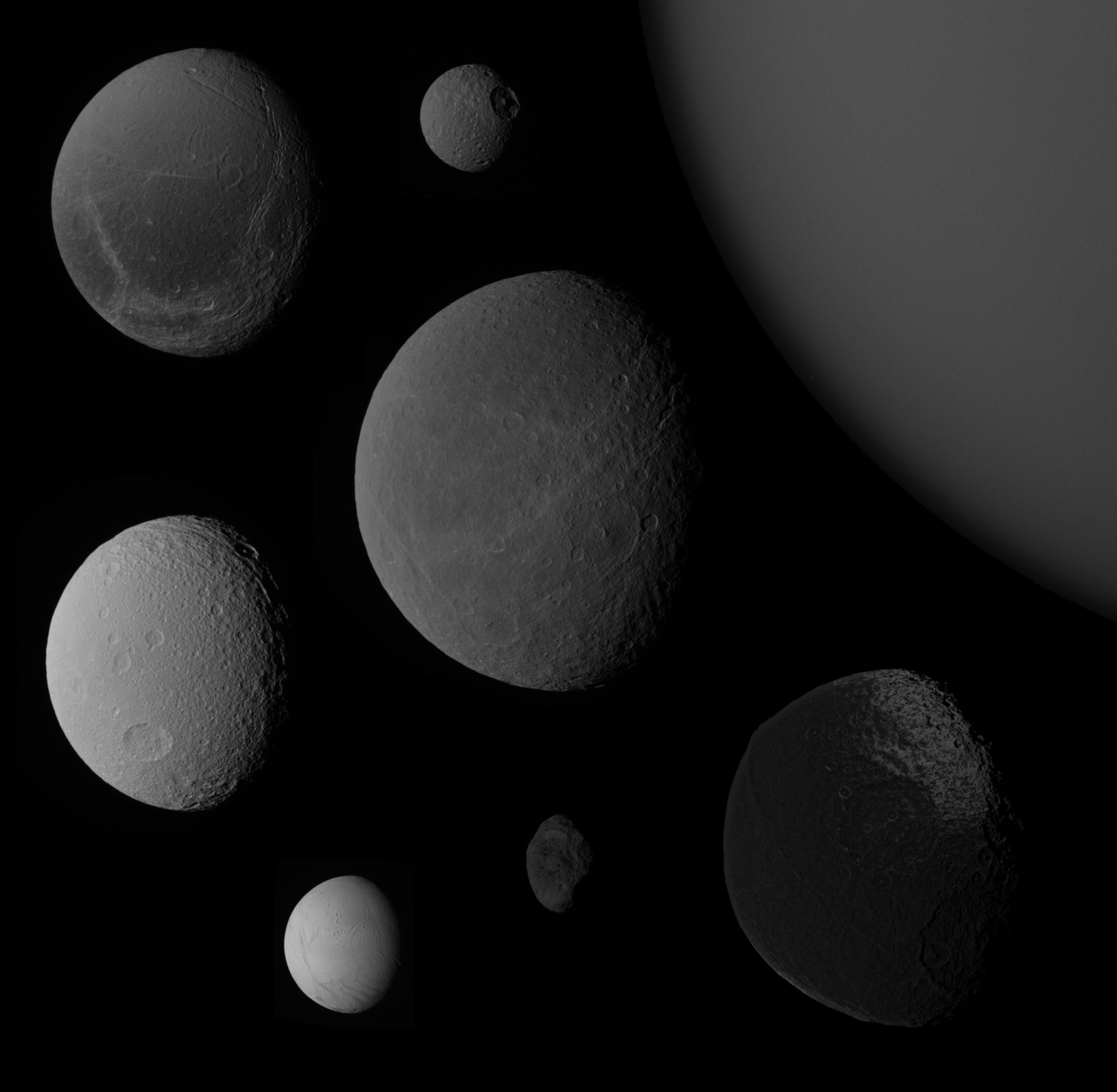Emily Lakdawalla • Apr 03, 2012
What Saturn's moons can tell us about comets (Notes from LPSC 2012)
I still have stacks of notes from the Lunar and Planetary Science Conference -- I will get to them little by little! Today I'm writing about a couple of interesting talks given late on Friday afternoon, a time when only a few stalwarts were left at the week-long conference. They were a two-part presentation by collaborators Jim Richardson and David Minton about the sizes of things in the Kuiper belt, a story they told by looking at Saturn's moons. How does that work?
What connects Saturn's moons to the Kuiper belt is craters. All of Saturn's moons have them, especially the mid-sized icy ones like Mimas, Tethys, Dione, Rhea, and Iapetus. (Enceladus is weird because it's so active, and Titan because of its atmosphere.)

At this point in the blog entry I was going to get into a lengthy explanation of crater size-frequency distribution plots, but I quickly realized that that was going to take up the rest of my day. So I'll keep this short. Richardson and Minton showed various such plots and used them to demonstrate that the things that struck the moons of Saturn to make those craters predominantly came from the Kuiper belt and not the main asteroid belt. But there's a few odd things about the populations of craters on these worlds. For one thing, there's fewer small craters than you'd expect, the sizes of craters made by bodies less than 5 kilometers in diameter. And for another, there's an excess of craters made by things 10 to 50 kilometers in diameter, the type that produce the large craters on the Saturnian satellites, like Herschel on Mimas. The big basins can be explained with the current population of sizes of bodies in the Kuiper belt, but the lack of small craters is a surprise. Richardson showed how you can produce this modern crater distribution if you change the sizes of comets over time, removing things 5 kilometers across and smaller as the solar system ages.
Another odd thing about the numbers of craters on Saturn's moons is that there are too many; the past rate of impacts would need to be 100 to 1000 greater to produce the saturation of these worlds with craters. Now, it's easy to produce impact rates like that with something called the Nice model (named after the French city, so it's pronounced "nees"), an explanation for the formation of the solar system in which the giant planets moved outwards with time and Neptune plowed into the ancient Kuiper belt, scattering the originally flat, circular orbits into inclined, elliptical orbits and showering comets inward to hit other things in the solar system. But the Nice model doesn't predict the strange lack of small craters.
Minton suggested that YORP may be at work. YORP is an awkward name for a set of processes that makes small, spinning things in the solar system spin faster over time, eventually spinning so fast that they can split in half. It operates only on small things, not large things, because it depends on the forces imparted by photons; you need a very large surface area in proportion to mass for the photons to be able to change the spin rate of a body by an observable amount. We can actually observe YORP effects on small bodies in the asteroid belt, seeing their spin rates increase by a very very tiny amount over time. Minton suggests that YORP effects have been operating in the Kuiper belt over the age of the solar system, and that they have removed small bodies from the Kuiper belt over time by splitting them into tiny bits.
Support our core enterprises
Your support powers our mission to explore worlds, find life, and defend Earth. You make all the difference when you make a gift. Give today!
Donate

 Explore Worlds
Explore Worlds Find Life
Find Life Defend Earth
Defend Earth

